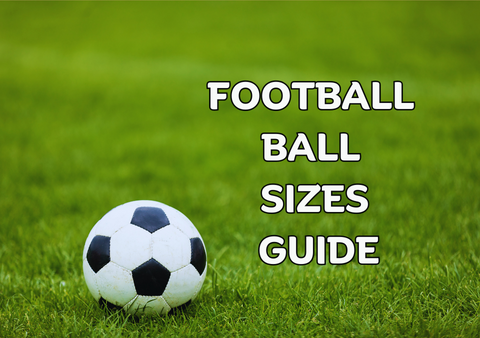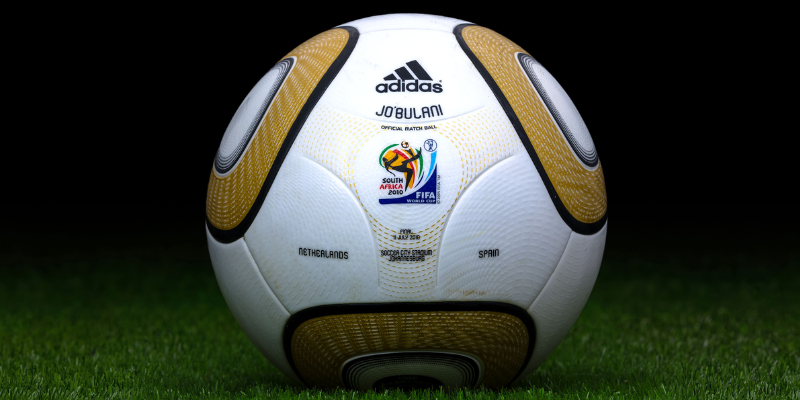
Football Ball Sizes Guide
Choosing the right football ball size for your game is one of the most important things.
In this article, we will look at the football ball official size guide.
We will talk about football sizes by age as well.
This article will help you better understand the different sizes of football ball to choose for your next match or training.
Football Ball Official Size
Below is the football sizes by age chart that will help you choose the ball which fits your needs the most.

Football Ball Size 1
Size 1 footballs are also known as “Mini-Balls” or “Minis” with 18-20 inches (46-51 cm) in circumference.
Based on the football size chart, none of these balls surpass a circumference of 20 inches. The main purpose of playing with size 1 is to improve the training of amateurs. These footballs are not heavy at all, which is very advantageous for players.
If you want to learn to control a ball with your legs and train before playing with a bigger ball, then a size 1 ball is the right choice. The size 1 ball is not used in competition.
Also, if you find it difficult to figure out what exactly you should collect as a souvenir of your football games, size 1 balls are also the most suitable for this purpose.
Most players and coaches use these balls for their memorabilia collection.
Size 2
Size 2 footballs have a circumference of 22″ and weigh 280 gm. They are also known as “Midi balls”.
If you’re looking to increase your ball control skills, consider using a size 2 ball for training. Generally, practicing with a Midi ball makes controlling larger footballs during games more comfortable due to their size difference.
With Midi balls, concentrating and getting the ball in contact with the foot is difficult. Therefore, coaches suggest this ball for fine-tuning foot skills.
In addition, due to the lighter weight of the size 2 balls, they are excellent for the age groups 3 to 6 years. Children in this age group are prone to more injuries if they have to kick or dribble the heavy standard balls.
Size 3
Size 3 football balls are 24″ and weigh between 11 and 12 ounces. They are the smallest official footballs used in games.
If there is one standard size of football that fits all ages, from toddlers and children in their early stages of professional matches, it would be the size 3 football.
For kids aged 6 to 9, the size 3 ball is optimal. While they may be pricier than typical practice balls, these balls are engineered for accurate flight, reliability, and superior control.
Size 4
This is where the game of football comes into the mainstream with different weights and sizes of footballs.
Size 4 footballs have a circumference of 25-26 inches and weigh 12-13 ounces. This ball is a standard football for children between the ages of 9 and 11 years old.
An interesting fact about this size ball is that size 4 balls are three times larger than primitive footballs. Since the bounce rate of the ball is low, players tend to play with it on a harder surface.
The qualities of this particular ball are particularly suited to indoor play on tiled floors. Nowadays, futsal uses size 4 balls.
Size 5 – Football Ball Official Size
At the 1970 World Cup, Adidas (sportswear manufacturer) introduced the well-known size 5 football and christened it Telstar. Since then, Adidas has supplied all footballs for World Cups.
The official match ball used in international competitions typically has a circumference ranging from 27 to 28 inches, as per standard football sizing. It weighs between 14 and 16 ounces, making it suitable for individuals aged 12 and above.
Size 5 balls are used in football leagues and competitions around the world, making them a favorite among young players too.
How to Choose the Right Football Ball?
Choosing the right football (soccer ball) can significantly impact your performance of the game. Here are some factors to consider when selecting a football:
Purpose
Determine the primary use of the ball. Is it for training, match play, indoor or outdoor use, or recreational purposes? Different types of balls are designed for specific purposes.
Size
Footballs come in different sizes to suit different age groups and game types. Make sure to select the appropriate size according to your age and the intended use of the ball. The standard sizes are:
- Size 5: Ages 12 and older (official match ball size).
- Size 4: Ages 8-12 (youth matches).
- Size 3: Ages 8 and under (youth matches).
- Size 2: Age 3-5.
- Size 1 or mini balls: For skill practice or very young children.
Material
Pay attention to the material of the ball. Most high-quality footballs are made of synthetic leather or polyurethane (PU) for durability and performance.
These materials offer better water resistance and shape retention compared to traditional leather balls.
Weight
The weight of the ball can affect its flight and handling. FIFA regulations specify the weight of a standard size 5 ball to be between 410 to 450 grams. Make sure the ball you choose falls within this range for optimal performance.
Construction
Check the construction of the ball, including the number of panels and the method of stitching. Traditional footballs are stitched together with hexagonal or pentagonal panels.
However, modern balls often use fewer panels or even seamless designs for improved aerodynamics and durability.
Inflation
Ensure the ball is properly inflated according to the manufacturer’s recommendations. Over or under-inflated balls can affect their performance and durability.
Brand and Reputation
Consider purchasing footballs from reputable brands known for their quality and reliability. Brands like Adidas, Nike, Puma, and Select are popular choices for footballs.
Budget
Set a budget for your football purchase. While high-quality balls may come with a higher price tag, they often offer better performance and durability, making them a worthwhile investment for serious players.
Personal Preference
Ultimately, choose a football that feels comfortable to play with and suits your playing style. Testing out different balls and getting feedback from other players can help you find the right one for you.
Most Expensive Football Balls Ever Sold
Football fans have seen expensive balls sold over the years, often tied to significant moments in the sport or featuring unique designs. Also, you can read more about the most expensive football boots. Here are a few notable examples:
2010 FIFA World Cup Final Ball – Adidas Jo’bulani

This football was used in the 2010 FIFA World Cup final between Spain and the Netherlands. It featured an intricate gold design to commemorate the final match held in Johannesburg, South Africa.
The Adidas Jo’bulani ball was auctioned for charity after the final, fetching a staggering price of over $74,000.
2014 FIFA World Cup Final Ball – Adidas Brazuca
The Brazuca was the official match ball for the 2014 FIFA World Cup held in Brazil. A special version of the Brazuca used in the final match between Germany and Argentina was auctioned off for charity.
It sold for approximately $83,000, making it one of the most expensive footballs ever sold.
2006 FIFA World Cup Final Ball – Adidas Teamgeist Berlin
The Teamgeist Berlin was used in the final match of the 2006 FIFA World Cup held in Germany. It featured a unique gold design and was auctioned off after the tournament. The ball sold for around $100,000, with proceeds going to charity.
The “Unicef Ball”
In 2002, a football signed by some of the world’s greatest football players was auctioned off to raise money for the United Nations Children’s Fund (UNICEF).
This ball, known as the “Unicef Ball,” fetched an astonishing price of over $100,000, with all proceeds going towards UNICEF’s humanitarian efforts.
2018 FIFA World Cup Final Ball – Adidas Telstar Mechta
The Telstar Mechta was the official match ball for the final of the 2018 FIFA World Cup held in Russia.
An auction for charity sold a special version of the Telstar Mechta used in the final match between France and Croatia. It sold for an impressive sum, although the exact amount is not publicly available.
Football Ball Sizes Guide Conclusion
In conclusion, understanding the football ball sizes is important for players of all ages and skill levels.
From size 1 mini-balls to size 5 standard match balls, each size serves a specific purpose in training and gameplay.
F.A.Q
What does mean 5 ball size in football❓
Size 5 are the football ball official size for ages 12 and older all the way up to professionals.
How many cm is a size 1 football❓
Size 1 football balls are also known as ‘Mini-Balls’ or ‘Minis’. At 18–20 in (46–51 cm) in circumference.
Are there different sizes of footballs for younger players❓
Yes, younger age groups use smaller sizes like 4 and 3.
Can adults use smaller-sized footballs for training❓
Players can use smaller-sized footballs for skill practice and training drills.
Do professional leagues use specific brands of footballs❓
Yes, professional leagues often have partnerships with specific brands for their match balls.
What size football do professionals use❓
Professionals typically use size 5 footballs for official matches.
